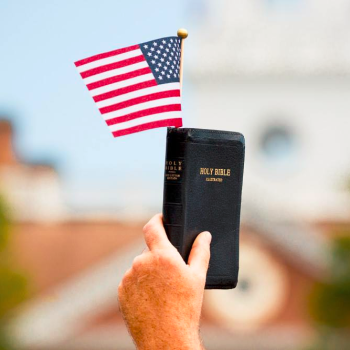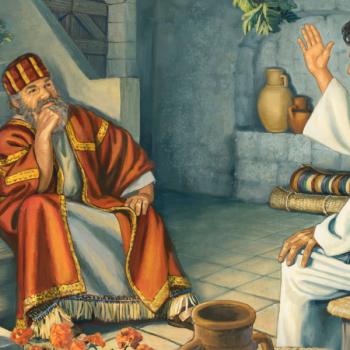
In part one we deconstructed racism by looking at its history from the Civil War to the highway construction project. In this part, we will look at the economic racism that was prevalent in the Regan years.
Ever heard of “Reaganomics”? Ronald Reagan was known for his economic policies. So much so that an economic perspective was created known as Reaganomics. We are often taught in conservative economic theory how great this time was for our country. We are taught about all of the jobs that were created and how our wealth increased. However, like most economic perspectives there are both winners and losers in the system.
If you were to look closely at many economic and educational policy changes throughout our history you would notice that most of these changes give an advantage to a particular demographic. Take Ronald Reagan’s initiatives to move large industries out of cities. This has a direct benefit to white blue-collar workers and made impoverished African American communities even poorer.
Many policy changes involve a “winner” and a “loser”. A good policy will limit or contain an addendum for the one being negatively affected. Unfortunately, this was not the case with Reagan’s policy initiatives in the 1980s. There is little doubt that Reagan’s initiatives significantly contributed to the “crack epidemic” of the ’80s. Crack was easy to sell, cheap to purchase, and poor communities were not only eager to consume it but to sell it.
Instead of evaluating their policies and creating health initiatives to help address those addicted to crack, even stricter drug laws were created. These laws specifically targeted African Americans. In 1986 the Anti-Abuse Drug Act was created which would create a mandatory minimum of 5 years in prison for as little as 5g of crack (a couple of small rocks). In contrast, the mandatory minimum for cocaine was 500g. If you are unfamiliar with drug lingo, “crack” is a solid form of cocaine and takes the form of small rocks. Cocaine is a white powdery substance. Due to how much cheaper crack is, it often is consumed by poorer people; whereas cocaine is often consumed by more affluent people.
Needless to say, this policy was effective. There was greater job creation for whites and smaller sentences for committing the same crimes as African Americans. African Americans became poorer, became heavily addicted to crack, and received harsher penalties for their usage.
When Reagan vowed to fight the “war on drugs” he put African Americans at greater risk. Now police became even more militant than they already were in poorer neighborhoods. By 1990 70% of those in prison were African American. In 2000 there were more African Americans in prison and jails than there were in higher education. In 2003, whites constituted 7.8% and African Americans constituted more than 80% of the defendants sentenced under the harsh federal crack cocaine laws, despite the fact that more than 66% of crack cocaine users in the United States are white or Hispanic. Source
Racism Today
But all of that is in the past, we are much better today, right? Racism today is demonstrated by the vast inequalities that exist in all of our systems. Lets take a look at some of these systems.
Economics: 1 out of 5 African Americans live in poverty (Statistica). just over 40 percent of African Americans own a home—a rate virtually unchanged since 1968. Source There is also a significant wealth gap between whites and African American’s. Whites make almost double what African Americans make on average for yearly income (ibid).
Crime: African Americans are incarcerated at a rate 5 times higher than whites despite committing fewer crimes (sentencingproject.org). Of those exonerated for murder, 31% were African American. and African American’s make up 47% of total exonerations. U of M Law
Education: African Americans only make up 12% of undergraduates in the country and only 8% are at elite institutions. In 2019, 29% of the Black population aged 25 to 29 held a bachelor’s degree or higher, compared to 45% of the white population in the same age range. (pnpi.org). Schools that are in poorer areas get $23 billion less than do more affluent schools. Source
Less money for these school districts means that they are unable to attract as many high-quality educators as suburban schools (and the high-quality teachers they do have are drastically underpaid). Less money means that these schools struggle to get the resources they need (curriculum, technology, etc.) to make their students competitive in the job and higher education markets.
Additionally, because many children have to work in order to contribute to their household income, they have much less time to study, get homework help, participate in extracurricular activities, etc.
Health Care: As demonstrated by the pandemic African Americans are distrustful of modern medicine. And, rightfully so! There is a history of medical experimentation on African Americans throughout history. Source Therefore many don’t seek the medical attention they need or participate in important preventative health care due to their distrust of the government.
Why Proper Education is Important
We need an overhaul of our history departments. I don’t believe we need to replace history, but I do believe that we need something that can come alongside history and help provide greater context for what our children are learning. As Americans, we idolize our history. We hold it up as this gold standard for how other countries should act. However, like in most cases, it is a history taught by the winners. It is far more than just an inaccurate history, it is a history that is incorrect. Why not just be honest about where we come from and confront the demons of the past. It’s the only way we can move forward into our future.
The majority of what you see in this article was never taught to me growing up. In fact, some of the stuff is even relatively new to me. I suspect that many white Americans are in the same position that I am in. I don’t believe that most white Americans want to be racist. Unfortunately, they are and much of it has to do with those in leadership positions who are overtly racist and prevent the average person to know the truth.
Concluding Thoughts
Although a very superficial treatment overall, this two-part article was meant to demonstrate to what extent the problem of racism is not much different than in the past. In fact, I never discussed the relationship the black community has had with the police; nor, did I discuss institutional racism; nor did I discuss why it was important for athletes to take a knee; nor did I mention the anxiety that exists within that community. All of these aspects are derivatives of what I have discussed. They are aspects of micro-racism that only make sense in the macro context. I have tried to paint a broad macro picture so that some of these other issues can be framed properly.
In the first article, I mentioned that just because slavery became illegal didn’t mean that African Americans were free. And just because you see some African Americans at the highest levels of business and government doesn’t mean they are treated equally. Keep that in mind.
You can view my UNenlightenment YouTube Channel HERE
You can view my UNenlightenment Podcast HERE
You can follow me on FaceBook HERE


















